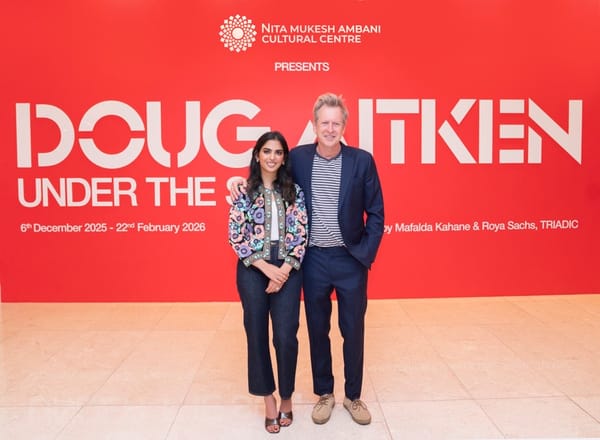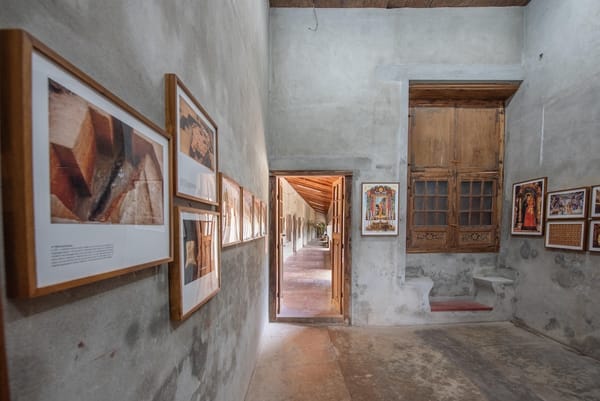Building Bridges in the Art World: Unlocking Success Through Networking
Discover how strategic networking transforms an artist's career. This guide offers practical tips to connect with industry professionals, boost visibility, and foster collaborations, paving the way for success and opportunities in the competitive art world.

In the contemporary art scene, technical prowess and creative innovation are only part of the equation for success. Equally vital is the ability to network effectively. From emerging artists to established professionals, forging and nurturing relationships within the art world can open doors to opportunities that might otherwise remain closed. This article explores why networking is essential in the art world, the benefits it offers, and practical strategies for cultivating meaningful connections.
The Changing Landscape of the Art World
The art world today is a dynamic and multifaceted network of galleries, collectors, curators, critics, and artists. With the advent of digital media and globalisation, the traditional boundaries of the art market have expanded. While this evolution has made art more accessible than ever, it has also led to an increasingly competitive environment. In such a setting, networking is not merely an add-on—it is a fundamental skill that can significantly influence one’s career trajectory.
Increased Competition and Opportunities
The sheer volume of talent on display in contemporary art means that standing out requires more than just creating compelling work. Artists must also navigate a complex ecosystem of art fairs, exhibitions, and online platforms. Establishing relationships with influential figures in the industry can lead to exhibition invitations, commissions, or even inclusion in prestigious art fairs. Networking thus serves as a bridge between artistic creation and professional opportunity.
The Role of Digital Media
Digital platforms have transformed the way artists interact with their audience and industry peers. Social media channels, online galleries, and virtual exhibitions have broadened the scope of networking. Artists now have the power to reach a global audience and engage directly with potential patrons and collaborators. However, this digital revolution also means that building a robust and authentic network online is just as critical as face-to-face interactions.
Why Networking Matters
Networking is often described as the art of building relationships that are mutually beneficial. In the art world, this practice can lead to a host of advantages that extend far beyond immediate financial gain.
Access to Opportunities
One of the most compelling reasons to network is access. Through meaningful connections, artists can gain invitations to exclusive events, access to private viewings, or introductions to key figures such as gallery owners and curators. These opportunities can significantly enhance an artist’s visibility and reputation. For example, a well-timed conversation at an art fair might lead to a solo exhibition, catapulting an artist’s career to new heights.
Building Credibility and Trust
In the art world, credibility is currency. Networking allows artists to build a reputation within the community. When respected professionals acknowledge your work or invite you to collaborate, it lends a level of validation that can attract further opportunities. This kind of trust and endorsement is crucial, especially for emerging artists who are still establishing their name.
Learning and Personal Growth
Networking is not solely about advancing one’s career; it is also an invaluable tool for learning. By engaging with a diverse range of individuals, from seasoned collectors to fellow emerging artists, one can gain fresh perspectives on trends, techniques, and market demands. These interactions foster an environment of continuous learning, which is essential for personal and professional growth in the fast-evolving art landscape.
Fostering Collaboration
Collaborative projects often stem from strong networks. Whether it’s co-curating an exhibition, working on a joint project, or simply exchanging ideas, collaboration can push artistic boundaries and lead to innovative outcomes. The synergy created when diverse minds come together is often greater than the sum of its parts, resulting in works that challenge conventional paradigms.
Support During Challenging Times
The art world, like any industry, has its ups and downs. Economic shifts, market trends, and changes in public taste can all impact an artist’s career. A well-established network provides a safety net during such periods. Peers can offer advice, share resources, or simply provide emotional support during challenging times. This sense of community can be indispensable, offering resilience in the face of adversity.
Practical Strategies for Effective Networking
Networking is an acquired skill that requires effort, patience, and authenticity. Here are some practical strategies to help you build and maintain meaningful connections within the art world.
Attend Art Events and Exhibitions
One of the most straightforward ways to network is by attending art events. Whether it’s a local gallery opening, an art fair, or a panel discussion, these events provide a platform to meet and interact with industry professionals. Make it a point to engage in conversations, ask thoughtful questions, and follow up with individuals after the event. Remember, the goal is to build genuine relationships, not merely collect business cards.
Engage on Social Media
In today’s digital age, social media platforms such as Instagram, Twitter, and LinkedIn have become indispensable tools for networking. Curate your online presence to reflect your artistic identity and engage actively with other artists, galleries, and collectors. Comment on posts, share insights, and participate in virtual events. Consistency and authenticity are key—online networking should complement, not replace, face-to-face interactions.
Join Art Organisations and Communities
Professional organisations and local art collectives offer structured opportunities for networking. These communities often host workshops, exhibitions, and collaborative projects that provide avenues for meeting like-minded individuals. Membership in such organisations not only enhances your credibility but also keeps you informed about the latest developments in the art world.
Seek Out Mentorship
Finding a mentor in the art world can be immensely beneficial. A mentor can offer guidance, share their experiences, and introduce you to influential contacts. While it might seem daunting to approach someone established in the field, many seasoned professionals are willing to support emerging talent. A well-chosen mentor can provide personalised advice that helps navigate the complexities of the art market.
Be Proactive and Follow Up
Networking is not a one-off event; it is an ongoing process. Once you have made initial contact, it is important to follow up and nurture the relationship. This could be as simple as sending a thank-you note after an event or scheduling a coffee meeting to discuss potential collaborations. The key is to show genuine interest in the other person’s work and maintain consistent communication.
Offer Value
Networking is a two-way street. While it is natural to seek opportunities, it is equally important to consider how you can offer value to others. This might involve sharing resources, providing feedback on a project, or simply being a supportive peer. When you approach networking with a mindset of mutual benefit, you build relationships that are more likely to endure over time.
Overcoming Networking Challenges
Despite its importance, networking can be intimidating, especially for those who are naturally introverted or new to the art world. Recognising and addressing these challenges can make the process more manageable.
Tackling Social Anxiety
Many artists experience social anxiety, which can make networking feel overwhelming. It is helpful to prepare in advance—rehearse a brief introduction, research the event, and set realistic goals for what you hope to achieve. Remember that most people at these events are in the same position, seeking meaningful connections rather than superficial exchanges.
Navigating Rejection and Setbacks
Not every networking attempt will result in a fruitful connection. Rejection or a lack of response can be disheartening. However, it is important to view these instances as part of the learning process. Each interaction offers valuable insights that can inform future approaches. Persistence and resilience are essential qualities for overcoming networking challenges.
Balancing Quality and Quantity
While it might be tempting to collect as many contacts as possible, the quality of relationships is far more important than the sheer number of connections. Focus on building a few strong, authentic relationships rather than spreading yourself too thin. Genuine connections are more likely to result in long-term professional support and collaboration.
The Long-Term Benefits of Networking
The benefits of networking in the art world extend well beyond immediate career advancements. Over time, a well-cultivated network can transform the way you work, think, and evolve as an artist.
Enhanced Creative Opportunities
By engaging with a diverse group of individuals, you expose yourself to a variety of ideas, perspectives, and artistic practices. This exchange of ideas can ignite your creativity, leading to innovative projects and collaborations that might not have been possible in isolation.
Increased Visibility and Recognition
Word of mouth is a powerful tool in the art world. A robust network can help amplify your presence, leading to increased visibility and recognition. As more people become aware of your work through shared connections and recommendations, you are more likely to be considered for exhibitions, commissions, and collaborative projects.
A Lifelong Community
The art world can sometimes feel isolating, particularly for those who work independently. Networking creates a community of peers and mentors who can offer support, share experiences, and provide encouragement throughout your career. This sense of belonging can be a vital source of strength and inspiration, particularly during challenging times.
Career Resilience and Adaptability
In an ever-changing art market, having a strong network can offer a buffer against economic fluctuations and shifts in public taste. Whether through collaborative projects, shared resources, or simply a supportive community, networking can help ensure that you remain adaptable and resilient in the face of change.





